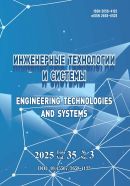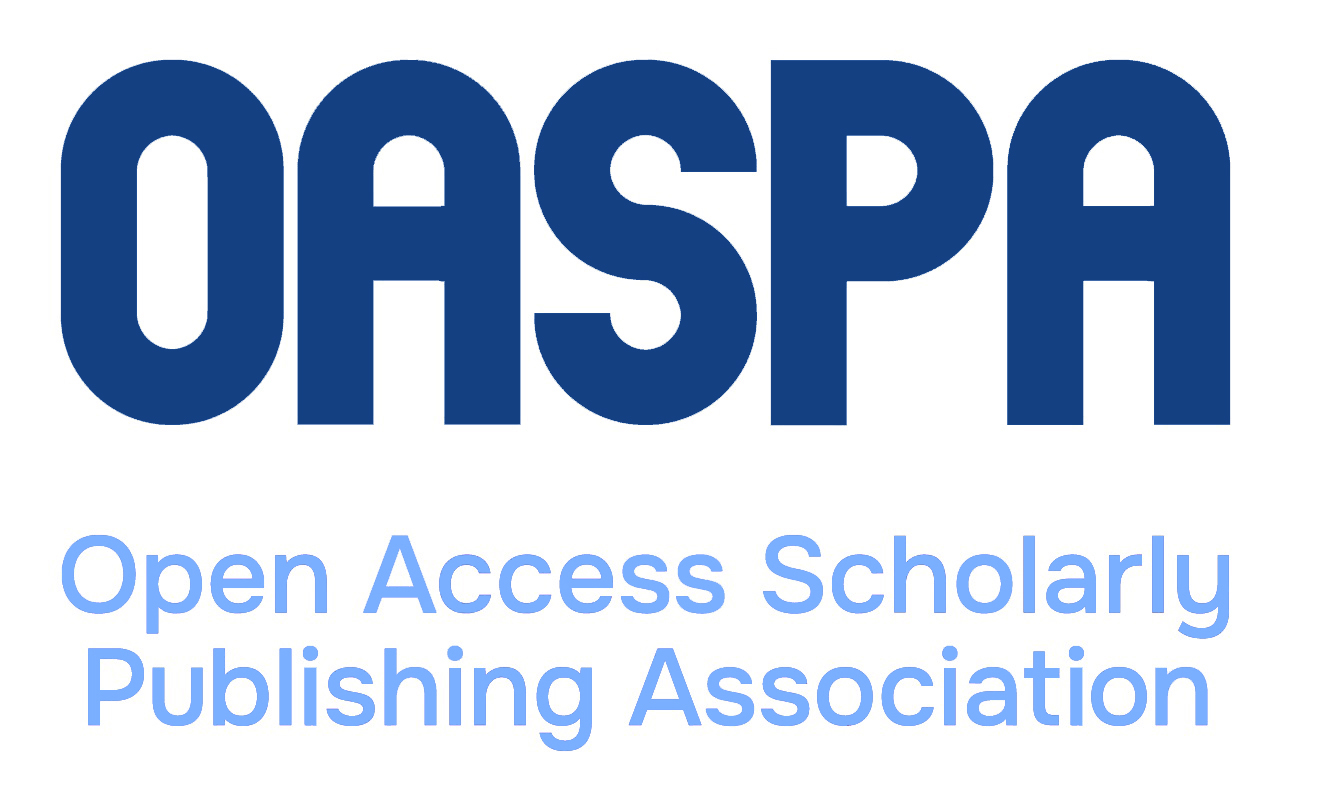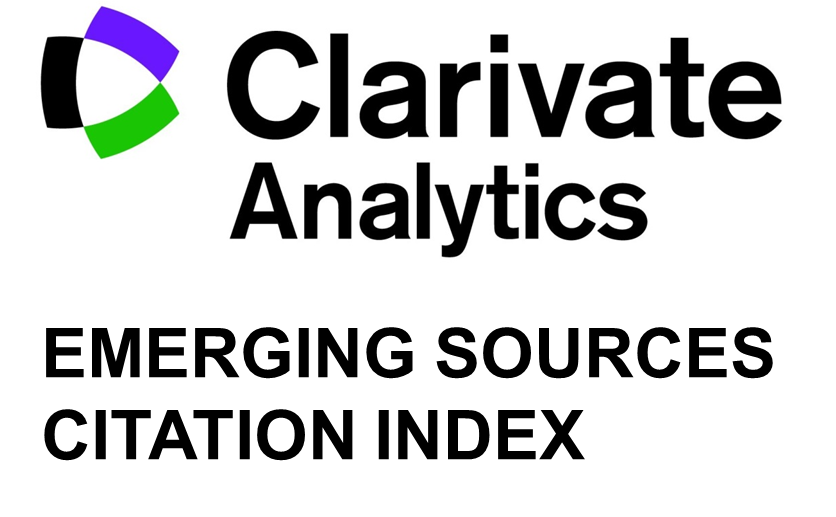DOI: 10.15507/2658-4123.035.202503.573-588
Performance Studies of Photovoltaic Air Collector with Aluminum Foam Fins
Monaem Elmnifi
Postgraduate Student in Department of Mechanical Engineering Technology, Belgorod State Technological University named after V. G. Shukhov (46 Kostyukova St., Belgorod 308012, Russian Federation), Lecturer, Bright Star University (Coastal Road St., Brega 00218, Libya), ORCID: https://orcid.org/0000-0003-4074-1877, Scopus ID: 57218518354, This email address is being protected from spambots. You need JavaScript enabled to view it.
Tatyana А. Duyun
Dr.Sci. (Eng.), Head of Department of Mechanical Engineering Technology, Belgorod State Technological University named after V. G. Shukhov (46 Kostyukova St., Belgorod 308012, Russian Federation), ORCID: https://orcid.org/0000-0001-8407-0628, Researcher ID: B53762016, Scopus ID: 6504101719, This email address is being protected from spambots. You need JavaScript enabled to view it.
Abstract
Introduction. Photovoltaic thermal collectors are a promising technology capable of generating electricity and recovering heat energy. However, the operating temperatures of photovoltaic cells are typically too high for efficient operation. One way to mitigate this problem is to use phase materials and conductive structures as an approach to improving thermal regulation and overall efficiency.
Aim of the Study. This paper aims to evaluate the suitability of aluminum foam fins and phase materials in improving the performance of an air-cooled photovoltaic collector and, more importantly, the impact of these materials on thermal and electrical yields. An aluminum foam frame was fabricated and placed on the back of a solar panel to serve as a heat dissipation medium.
Materials and Methods. To ensure consistency in experimental tests, experimental tests were conducted under both summer and winter operating conditions, and performance parameters were tested and compared with available studies to determine reliability.br /> Results. The results revealed that the overall performance of the photovoltaic thermal collector ranged from 43.07 to 50.35% in summer and from 47.94 to 51.53% in winter. These results demonstrate that the incorporation of aluminum foam fins has a significant impact on thermal management and energy conversion efficiency compared to conventional photovoltaic thermal systems.
Discussion and Conclusion. In summary, this study demonstrates that photovoltaic thermal air collectors with phased materials represent a practical and effective approach to renewable energy practices, offering improved operational stability and increased energy production. The study also demonstrates the potential of hybrid photovoltaic thermal systems as a platform for sustainable energy development.
Keywords: photovoltaic thermal collector, diverse climate, energy efficiency, renewable solution
Acknowledgments: The authors are grateful to the anonymous reviewers whose objective comments contributed to the quality of the article.
Conflict of interest: The authors declare that there is no conflict of interest.
For citation: Elmnifi M., Duyun T.A. Performance Studies of Photovoltaic Air Collector with Aluminum Foam Fins. Engineering Technologies and Systems. 2025;35(3):573–588. https://doi.org/10.15507/2658-4123.035.202503.573-588
Authors contribution:
M. Elmnifi – formulation of the research concept; developing or designing methodology; conducting the study, specifically performing the experiments or collecting the data; preparing and presenting the manuscript, specifically visualizing and presenting data.
Т. А. Duyun – formulating the study aims and objectives; conducting the study, specifically performing the experiments or collecting the data; preparing and presenting the manuscript, specifically writing the initial draft.
All authors have read and approved the final manuscript.
Submitted 03.03.2025;
revised 16.05.2025;
accepted 04.06.2025
REFERENCES
- Al-Karboly A.M., Ibrahim A., Fazlizan A., Sopian K., Al-Aasam A.B., Bin Ishak M.A.A., et al. Experimental Evaluation of a Photovoltaic Thermal Collector Using Twisted Tape Absorber with Nano-Enhanced Phase Change Material for Thermal Storage. Journal of Energy Storage. 2025;109:115122. https://doi.org/10.1016/j.est.2024.115122
- Majdi H.S., Younis A., Abdullah A.R., Elmnifi M., Habeeb L.J. A Comparative Analysis of the Efficiency of Monocrystalline and Polycrystalline Photovoltaic Modules: CTI-80 and YHM-205-27P. International Journal of Design & Nature and Ecodynamics. 2023;18(4):775–782. https://doi.org/10.18280/ijdne.180403
- Huang M.J., Eames P.C., Norton B., Hewitt N.J. Natural Convection in an Internally Finned Phase Change Material Heat Sink for the Thermal Management of Photovoltaic. Solar Energy Materials and Solar Cells. 2011;95(7):1598–1603. https://doi.org/10.1016/j.solmat.2011.01.008
- Alsaqoor S., Alqatamin A., Alahmer A., Nan Z., Al-Husban Y., Jouhara H. The Impact of Phase Change Material on Photovoltaic Thermal (PVT) Systems: A Numerical Study. International Journal of Thermofluids. 2023;18:100365. https://doi.org/10.1016/j.ijft.2023.100365
- Hasan A., Alnoman H., Rashid Y. Impact of Integrated Photovoltaic-Phase Change Material System on Building Energy Efficiency in Hot Climate. Energy and Buildings. 2015;130:495–505. https://doi.org/10.1016/j.enbuild.2016.08.059
- Hasan A., McCormack S.J., Huang M.J., Sarwar J., Norton B. Increased Photovoltaic Performance Through Temperature Regulation by Phase Change Materials: Materials Comparison in Different Climates. Solar Energy. 2015;115:264–276. https://doi.org/10.1016/j.solener.2015.02.003
- Tan L., Date A., Fernandes G., Singh B., Ganguly S. Efficiency Gains of Photovoltaic System Using Latent Heat Thermal Energy Storage. Energy Procedia. 2017;110:83–88. https://doi.org/10.1016/j.egypro.2017.03.110
- Kouravand A., Kasaeian A., Pourfayaz F., Rad M.A.V. Evaluation of a Nanofluid-Based Concentrating Photovoltaic Thermal System Integrated with Finned PCM Heatsink: An Experimental Study. Renewable Energy. 2022;201(1):1010–1025. https://doi.org/10.1016/j.renene.2022.11.025
- Yagci O.K., Avci M., Aydin O., Markal B. An Experimental Study on the Performance of PCM-Based Heat Sink with Air for Thermal Regulation of PVs. Solar Energy. 2024;278:112800. https://doi.org/10.1016/j.solener.2024.112800
- Hasan D.J., Farhan A. Enhancing the Efficiency of Photovoltaic Panel Using Open-Cell Copper Metal Foam Fins. International Journal of Renewable Energy Research. 2019;9(4):1849–1855. Available at: https://www.researchgate.net/publication/338388161_Enhancing_the_Efficiency _of_Photovoltaic_Panel_Using_Open-Cell_Copper_Metal_Foam_Fins (accessed 01.06.2025).
- Mutar W.M., Alaiwi Y. Experimental Investigation of Thermal Performance of Single Pass Solar Collector Using High Porosity Metal Foams. Case Studies in Thermal Engineering. 2023;45:102879. https://doi.org/10.1016/j.csite.2023.102879
- Abbasov H.F. The Effective Thermal Conductivity of Composite Phase Change Materials with Open-Cellular Metal Foams. Int J Thermophys. 2020;41:164. https://doi.org/10.1007/s10765-020-02747-z
- Madgule M., Sreenivasa C.G., Borgaonkar A.V. Aluminum Metal Foam Production Methods, Properties and Applications-a Review. Materialstoday: Proceedings. 2023;77(3):673–679. https://doi.org/10.1016/j.matpr.2022.11.287
- Amori K.E., Al-Najjar H.M.T. Analysis of Thermal and Electrical Performance of a Hybrid (PV/T) Air Based Solar Collector for Iraq. Applied Energy. 2012;98:384–395. https://doi.org/10.1016/j.apenergy.2012.03.061
- Wang.G, Zhao K., Shi J., Chen W., Zhang H., Yang X., et al. An Iterative Approach for Modelling Photovoltaic Modules without Implicit Equations. Applied Energy. 2017;202:189–198. https://doi.org/10.1016/j.apenergy.2017.05.149
- Joshi A.S., Tiwari A., Tiwari G.N., Dincer I., Reddy B.V. Performance Evaluation of a Hybrid Photovoltaic Thermal (PV/T) (Glass-to-Glass) System. International Journal of Thermal Sciences. 2009;48(1):154–164. https://doi.org/10.1016/j.ijthermalsci.2008.05.001
- Elmnifi M., Mansur A.N., Hassan A.K., Abdullah A.R., Ayed S.K., Majdi H.S., et al. Experimental and Simulation Study for Improving the Solar Cell Efficiency by Using Aluminum Heat Sinks. Proceedings on Engineering Sciences. 2024;6(1):161–170. https://doi.org/10.24874/PES06.01.018
- Ayed S.K., Elmnifi M., Moria H., Habeeb L. Economic and Technical Feasibility Analysis of Hybrid Renewable Energy (PV/Wind) Grid-Connected in Libya for Different Locations. International Journal of Mechanical Engineering. 2022;7(1):930–943. Available at: https://clck.ru/3P9Jf7 (accessed 01.06.2025).

This work is licensed under a Creative Commons Attribution 4.0 License.

















